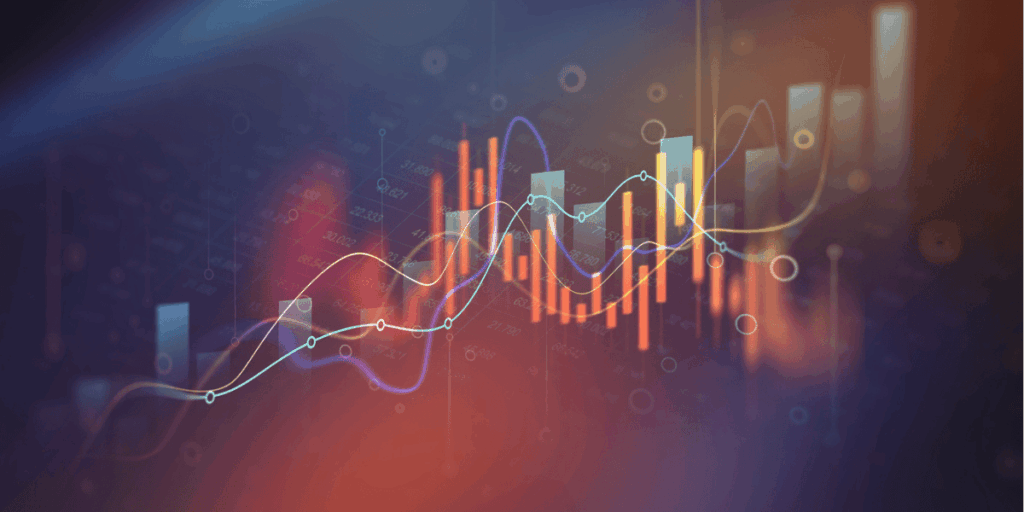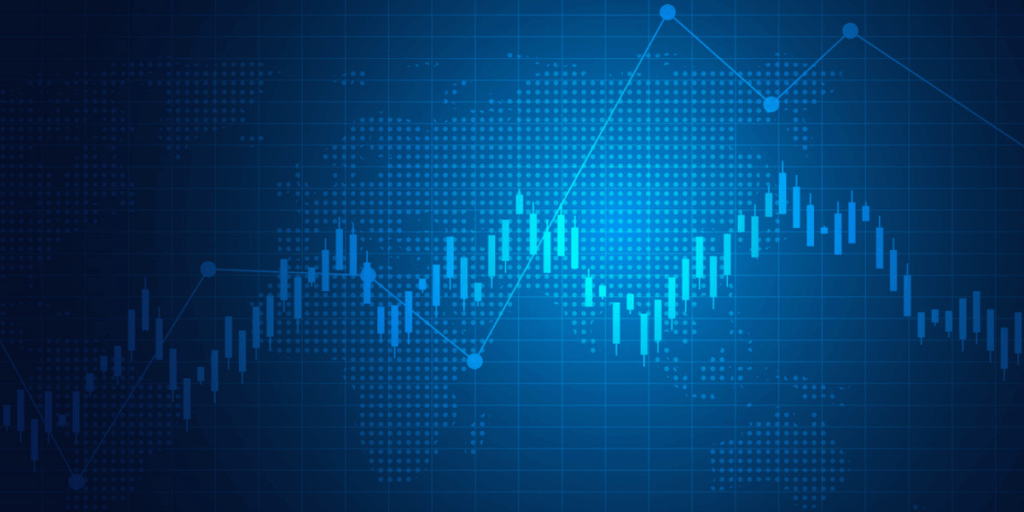For those of you who would prefer to listen:
This brutal Bear Market continues. Summer has moved to Fall. That’s a theme right there. Seemingly everything fell this week. Stocks declined. Bonds declined. Gold, Oil, Crypto and most foreign currencies did too. The Dollar is all that has stayed elevated. And it has increased to a level not seen in decades. The runaway Dollar keeps denting asset prices. There have been some wild moves in currencies. A rising Dollar and rising rates put a squeeze on risk assets like stocks. The rising Dollar is also an indication that, as tough as things are in America, it’s in much better shape than anywhere else in the world. Let’s start with that.
So why is the Market so unsettled? It’s a combination of multiple pressures occurring simultaneously. The nagging inflation has the Fed on a combat mission to stop it. Rising interest rates lead to higher bond yields. Prices go down as money gets more expensive. It’s all happening as global growth slows and recession risks rise. On top of this is a Cold War with China, Hot War in Ukraine, uncertainty around corporate earnings and a midterm election about a month away. There’s a lot to digest.
I covered last week the price we are now paying for the asset bubbles built due to the free money policies in response to the pandemic. There’s no such thing as free. The Fed made a tactical blunder by keeping rates at zero and buying assets too long. They were still doing it this year. Lower-for-longer was the tactic. Sky high inflation was the result. Now they run the risk of going too far to correct the mistake. They are choking off the money supply in the financial system. The Market is stressed.
Expectations for a soft landing have gone out the window following the latest Fed meeting on Wednesday. The question now appears to be: how hard of a hard landing will there be? It’s still all about the Fed.
The Federal Reserve raised the overnight rate by another 75 basis points (3/4%) this week. That was the third straight increase of that size. We haven’t seen rate hikes like this in 40 years. We haven’t seen inflation like this since then either. The Market is currently putting a 74% probability on a fourth straight 75 bp rate hike in November. The Market now factors in the overnight rate to end the year at 4.4% and a 4.6% terminal rate in 2023. That’s up from the previous expectations of 4%. The Fed has made it clear that it intends to keep interest rates higher-for-longer. It’s the complete opposite from a year ago.
This from the Fed Chair this week: “We have got to get inflation behind us. I wish there were a painless way to do that. There isn’t.” As I wrote last week, the Fed is trying to brake the Economy. The Market is signaling it’s going to break the Economy. That’s the pain we are feeling. In some ways, the Fed Chair is seeking a recession to break inflation. The Market is acting like the Fed is breaking everything.
This is pretty unprecedented stuff. The Fed hiked rates this week with the S&P 500 already down 19% on the year. In history, only once did they hike with the S&P 500 down more year-to-date and that was 3 months ago in June when it was down 23%. 2022 has a lot of records. Most haven’t been good. Add this to the list.
The Fed has triggered an absolute relentless move higher for interest rates. Bond yields have spiked. 10-year Treasury yield pushed 3.8% this week, its highest level since 2011. The 2-year Treasury yield hit its highest level since 2007, topping 4.2%. The spread between 2s and 10s went over 0.5% for the first time since 2000. The 30-Year Treasury yield is the lowest of them all. The Yield Curve is now in a reverse slope down. That’s backwards. That’s a problem.
When yields go up, Bond prices go down. They have that tight inverse relationship. Bond prices have gone down big in 2022. This is shaping up to be the worst year for Bond Market in decades. In the 45 years that the Bloomberg Bond Aggregate index has existed, bonds have fallen in value only 5 times. One of them was last year. This year, the Bond Agg is down double-digits. That has not happened since 1931.
The move in rates has happened fast. It actually has us liking the Bond Market for the first time in years. There was a big risk in rising rates when bond yields were at historic lows early on in Covid. That risk has been realized. We stayed underweight fixed income intentionally. That is about to change. We see a lot of value in the front-end of the curve, with 4% yields. Additionally, as the Economy heads further towards recession, we anticipate yields falling, which would lead towards higher bond prices. Our focus is to take what the Market gives us.
This is the first time in a while that bonds present a legitimate alternative to stocks for income investments. At this stage, fewer than 20% of 500 S&P stocks have dividend yields higher than the yield on 10-Year Treasuries. That is the lowest share since 2006. Stocks historically don’t do well when yields and interest rates jump. That’s certainly been the case this year. The price of money is more expensive. Profitability gets squeezed. That’s what causes Bear Markets.
Inflation remains sticky. Commodity prices have fallen. That is huge; Particularly with food and energy, things we use every day. Rent has shown signs of peaking too, but at high rates. People need to live somewhere. Shelter accounts for 1/3 of CPI (Consumer Price Index). It’s different than food and gas prices which can re-price daily. Rents are generally locked in for a year without the ability to re-finance earlier. Rents for single-family homes were up 12% in July from a year ago. However, this marked the third straight month of slower annual gains. That’s big.
The Fed Chair addressed it this week: “For the longer term, what we need is supply and demand to get better aligned, so that housing prices go up at a reasonable level, at a reasonable pace, and that people can afford houses again.” But here’s the thing: The Fed can’t control supply. It can’t build more houses. It can’t produce more energy. It can’t grow more food. What the Fed can do is crush demand. They’re doing just that. 30-year fixed mortgage jumped to 6.5%. It was 2.8% a year ago. A 6% mortgage buys a lot less house. Buyers have vanished. Prices are falling.
More signs of inflation reprieve: Worker shortages have eased in the restaurant industry. It is particularly noticeable at the national chains. Foodservice employment is back near Pre-Covid levels in America. It sure has taken a while. Declining Oil prices has led to cheaper gas. The price at the pump fell 99 consecutive days. That’s more money in American pockets to spend elsewhere. Supply chain strains are easing too. Container rates have fallen. That means fewer costs passed on to Consumers ahead of the Holidays.
Earnings Season is around the corner again. It’s going to be quite telling to see how Corporate America is holding in. There have already been some preannouncements with misses. Expectations are already pretty low. The question is, how low? Forecasting is nearly impossible right now. That makes pricing in future outcomes quite difficult. You can’t determine true fair value, in terms of the traditional Price/Earnings ratios when you don’t know the E. That creates tremendous Market turbulence. That’s what we’re getting.
Heading into 2022, expectations for this year were $225 for the S&P 500 and next year at $243. They still haven’t budged. Expectations are likely too high. The Street hasn’t even started cutting estimates yet. The Market is starting to force their hands. The Street is always late to act. Case in point, Goldman Sachs just lowered their year-end target for the S&P 500 to 3600. That’s basically where it is right now. Keep in mind, Goldman has cut their target 3 times now, originally forecasting 5,100 on the S&P back in January. Very helpful. I suppose you sense the sarcasm.
I mentioned the Dollar earlier; It’s been Super Strong. This week, Japan intervened in the currency market to support the Yen for the first time this century. The Japanese currency fell to the weakest level against the Dollar since 1998. The Euro broke below parity against the Dollar. The British Pound Sterling fell to a level not seen since the Reagan Administration. The Yen and the Euro are by far the most traded currencies against the Dollar. When both are weak, it makes it harder for anything else to rival the greenback. They are all at multi-decade lows.
There’s also the war in Ukraine; it entered its 8th month. The European Union is rushing to complete another round of sanctions against Moscow following an escalation of the war. Not everyone in Europe is united in how to respond. Vladimir Putin clearly knows this and is exploiting it. This week Putin announced a “partial mobilization” that will enlist another 300,000 troops. That caused major concerns about what a new stage of battle might look like. Interestingly, the price of Oil keeps falling. West Texas Intermediate fell below $80 for the first time all year. That indicates that demand is being destroyed more than supplies could get curbed. It suggests a Global recession is upon us.
The S&P 500 is down over 20% for the year, so far in September. Since 1950, 2022 joins 1962, 1974, 2001, 2002, and 2008 as the only years to ever do that. Only 2008, during the Financial Crisis, saw things get worse by the end of the year. 1962 was the only year that avoided a recession. So, recession ultimately looks like it’s in the bag. The Fed has made it clear it actually seeks it. But history shows that things can get better for investors from here. The Market is a discounting mechanism which prices things in advance. The Market will certainly turn quicker than the Economy.
We live in an age of extremes. 2021 brought euphoria not seen since the Dot-com days. 2022 has been the complete opposite. There’s so much negativity. Sentiment has seldom been this sour. Perhaps the best thing for the Market is how bad it feels. The weekly sentiment study reported that those Bearish on the outlook just hit 61%. This level of bearishness has happened only 4 other times in history. Last time was 2009, in the heart of the Financial Crisis. There are now just 17% Bulls. The Bull-Bear spread hit -43.1%. It was -19% last week. This spread between Bulls and Bears is wider than the lows seen during both the Dot-com bubble burst and the Covid crash. It’s that bad. Then there’s this: Money fled the Market, with over $30 Billion leaving stocks and bonds and going to cash. That’s a big number. The read-through is people threw in the towel. That means, from a contrarian standpoint, it might be a good sign for bottom formation.
With all of these issues running rampant, the Market has a serious case of indigestion. When things are just so unsettled, the best solution is to just puke it out. That’s what’s going on with the Market. It’s nowhere close to fun. But it’s necessary. It’s what finally leads to better conditions. Friday brought it. At one point, the Dow was down over 800 points. The final hour brought some serious reprieve, with half the losses erased. The S&P and NASDAQ were down 3% at the lows. They cut those losses quite a bit too. That is not insignificant.
We’ve said for months that a re-test of the June lows was likely. It’s happening. It happened fast in September. The Dow broke the June low. The S&P and NAS came close but did not. That’s where key support lies. Holding it will be critical. We view the lows as a line in the sand for the directional Market movement forward. Another important factor was seeing yields reverse midday. Bonds started rallying. That was another green shoot worth studying further. The way the Market closed Friday, heading into the weekend provided some encouragement.
Since we seem to be blanketed with bad news, I wanted to point out some positives that don’t seem to be getting much recognition. The American people are still living their lives and companies that provide high demand products and services are still holding in just fine. Amazon’s deal with the NFL is already bearing fruit. More people signed up for Amazon Prime ahead of the first game than on Prime Day, Black Friday and Cyber Monday combined. This on top of all the Amazon delivery vans and trucks from coast-to-coast bringing packages to Americans daily. Along this theme, Costco just reported better-than-expected revenue and profits for its last quarter. People are still buying Cokes and ketchup, clothes, Corona, coffee, fruit and meat. They might be buying in smaller quantities as the Economy slows. But companies still deliver regardless of where we are in the cycle. Something that will make all Costco shoppers happy; They didn’t raise the annual membership fee. We saved money already.
So, as you settle into Fall, just remember that September is historically the worst month on the calendar for stocks. October has brought many Market bottoms, which have set up a powerful year-end rally. Q4 has traditionally been the best-performing quarter. Perhaps it was a sign last night that I heard the Green Day song on my way home from the office: “Wake Me Up When September Ends”… September is almost over.
Have a nice weekend. We’ll be back, dark and early on Monday.
Mike






